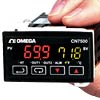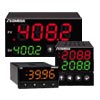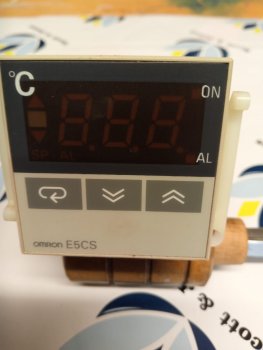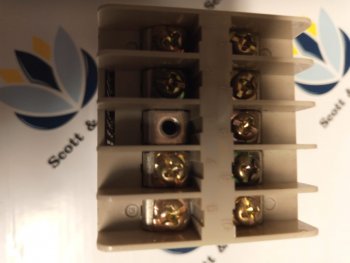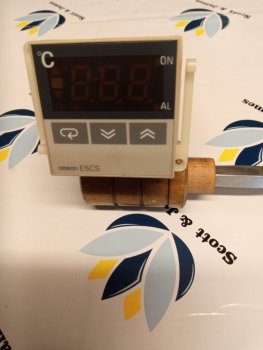I think the CN7500 series is "just" the 1/32 DIN version of the CN7xxx range of controllers. I have used the 7200, 1/4 DIN (96 x 96mm) and 7600 1/8 DIN vertical (48mm wide x 96mm tall) versions. I like the 7200 best because, being twice the size, it's easier to see the display from several feet away (and there's less tendency to fat-finger the buttons), always a consideration for an old codger. If/when I get to build an oven to keep, it'll get a CN7223. Most of the ovens I've built have gone to knifemakers younger than me and use the CN7823. The 78xx is the 1/16 DIN (48 x 48mm) version and that's the most common size for PID controllers. It therefore gives the most adaptability and I feel it's worth the extra 8 quid over the 24 x 48mm 75xx.
Knifemakers seem to be tidy individuals and may be a tad obsessive about keeping the wiring neat. However, it is a really good idea to leave an extra inch or two on the wiring to the back of the controller so that you have the option of changing it out later. Different models may have different depths behind the panel and different terminal layouts. A couple of inches extra on the wiring will accommodate this.
The Omega CN7xxx and Automation Direct Solo series controllers have the ability to autotune at 4 different temperatures and to automatically select the PID values for the autotune temperature nearest to the setpoint. If you make a control box with plug-in connections for the power out to the elements and for the thermocouple, you can use the same control box for an Austenitizing oven and for a tempering oven (which could be a mildly-modified toaster oven).
Plug in the tempering oven and run autotunes at, say, 100 degC and 499 degC. Plug in the Austenitizing oven and autotune at, say 500 degC and 1000 degC, set the controller to autoselect the nearest PID terms.
Now you plug in the Austenitizing oven for the high temperature stuff at 500 degC-plus (normalise, Austenitize), quench, plug in the tempering oven for the low-temperature stuff (sub-500 degC temper) and avoid the need to wait for the hi-temp oven to cool to lo-temp.
The CN7xxx has plenty of capacity for ramp/soak profiles for most of us. It is not very user-friendly to program though, particularly compared to the controllers on the likes of the Evenheats and Paragons. Not necessarily a problem, but something to be aware of.
My preference for a thermocouple would probably be an Omega TJ1NNXL-IM30U300
The TJ means it's a transition junction probe, with the extension cable fitted by Omega. This removes, or at least greatly reduces, the possibility of the user connecting it up wrong.
The NN means it's a typeN: originally developed as a "better type K" for high-temperature applications to overcome the "drift" that affects typeK thermocouples which spend much time above about 1000 degC.
The XL means it has the proprietary "Super Omegaclad XL" sheath, claimed to be good to 1335 degC (NOTE: if buying from anyone but Omega, you'd want a Nicrobell sheath, normally considered good to 1250 degC).
I don't know what the IM denotes (maybe mineral insulated?)
30U means 3.0mm outer diameter and an ungrounded junction.
300 means 300mm long. You might be ok with 150mm, but the 300 lets you bend it on a decent radius outside the oven and means that the Transition Junction does not stick out very far. For me, not losing a couple of inches of bench is worth the additional cost for the extra 6" of thermocouple. YMMV.

